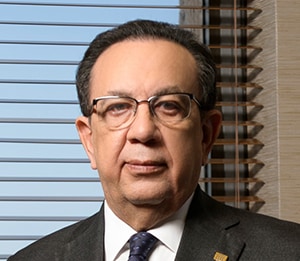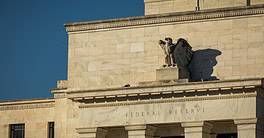The governor of the Central Bank of the Dominican Republic speaks to Global Finance.

Global Finance: What has been the impact of the Covid-19 pandemic on the Dominican Republic economy? What are your expectations for the remainder of 2020 and 2021?
Héctor Valdez Albizu: To start with, it is important to point out that we are facing an unprecedented shock ¬that forced us to adopt containment measures for the Covid-19 pandemic. This crisis, which started as a health crisis, caused a worldwide recession of 5%, according to the IMF, with a decline in international trade and a paralysis of tourism that hit both advanced and emerging economies and hit job creation hard.
In the case the Dominican Republic—a small, open economy—the lockdown measures affected important sectors, among them tourism, export and foreign direct investment, thus worsening the situation of job creation. The lockdown put a big brake on construction and manufacturing, diminishing the ability of the economy to work at its fullest and to create wealth at its usual pace. Yet, in the particular case of the Dominican Republic, even in the strictest lockdown period, important economic activities that together make up of 50% of the GDP kept working, such as agriculture, fishing, financial services, health, and industry and trade linked to food, drugs, and mines.
In most recent months, the gradual reopening of productive activities has allowed a stable recovery of the economic assets in key industries such as building and free zones, with a large impact on other activities and employment.
Looking forward, we expect a gradual recovery of the economy in the remaining part of the year, backed by a wide package of recovery measures—including a more flexible monetary policy that prompted a rise of private loans to a yearly expansion rate of 10%, and an active fiscal policy that focused on increasing social subsidies, maintaining jobs and giving more resources to health and education. The forecasting models say that the Dominican Republic is expected to end 2020 down between 3.5% and 4.5%, while in 2021 it should bounce back to its potential growth of between 5% and 6% once the health and economic crises are over, with low inflation and a stable macroeconomic outlook.
GF: What is the central bank doing to back the economy and contain poverty in the current recession?
Valdez: The Central Bank of the Dominican Republic has been acting in a proactive way since Covid-19 appeared in March, reducing the key interest rate by 150 basis points to a record low of 3.0%, with the target of boosting private credit. In addition to that, we adopted a quantitative easing package worth more than 4% of GDP, a measure with no precedent in our history.
In addition to these measures, we also decided to establish a special regulatory treatment for the loans obtained via these facilities over a year, in addition to freeze debt levels and credit ratings to pre-pandemic levels
The central bank has also been actively involved in the foreign exchange market, with the aim of compensating for the slowdown in foreign exchange–generating activities, contributing to the maintenance of relative foreign exchange stability.
In addition, with the aim of increasing resources in foreign currency, the BCRD (Banco Central de la República Dominicana) acceded to the IMF Rapid Financing Instrument for about $650 million, equivalent to 100% of the country’s share of the IMF.
This set of measures provided much needed credit to the private sector and some financial relief to firms and families facing the difficult situation of the pandemic. The monetary stimulus has also provided favorable conditions to back domestic demand and recovery of productive activities in the coming months.
GF: What are your expectations for Central America as a region?
Valdez: Central America is facing the same difficulties that other countries are facing because of the Covid-19 pandemic, as well as the ones due to the worldwide contraction of economic activity. Looking forward, this year’s contraction is expected to be temporary and the IMF is forecasting a recovery of around 3.2% for 2021. Central America might emerge from the crisis faster than other regions. An advantage is the low dependence from the export of primary goods and the high dependence of interregional trade.



